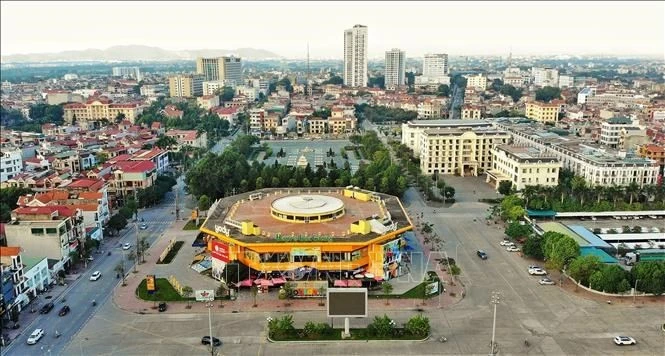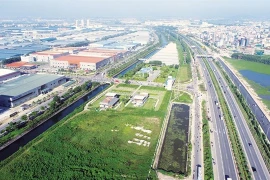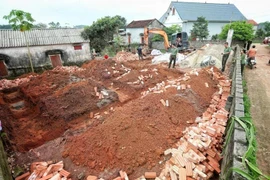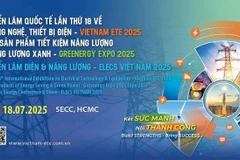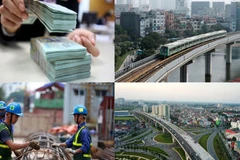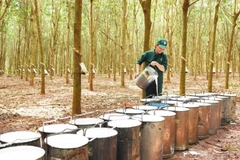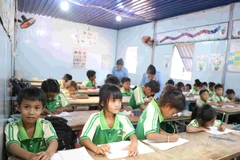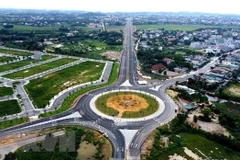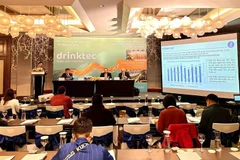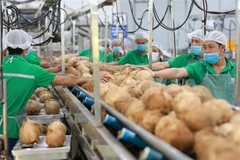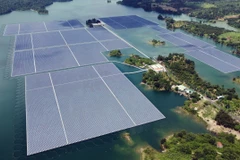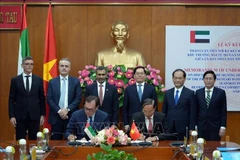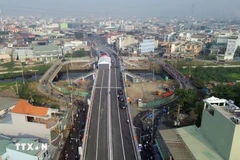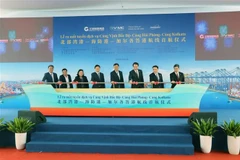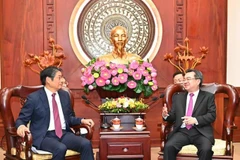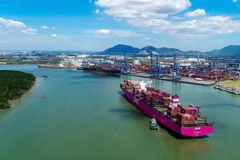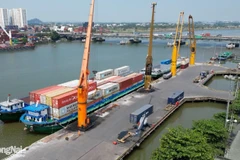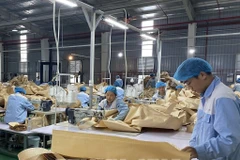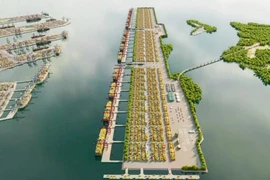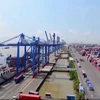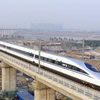Bac Giang (VNA) – The northern province of Bac Giang is set to roll out breakthrough solutions on the development of science, technology, innovation, and digital transformation, aiming to effectively realise the Poliburo’s Resolution No. 57-NQ/TW on the issue, Director of the provincial Department of Science and Technology Nguyen Thanh Binh has said.
The department will advise the provincial People’s Committee on effectively carrying out a programme on developing key and potential products, plans on the implementation of intellectual property strategy; application of biotechnology, information technology, digital transformation and artificial intelligence (AI) as well as those on enhancing products’ productivity and quality.
In the coming time, Bac Giang will increase investment and improve infrastructure to enable the research and development of strategic technology and industry, new energy and clean energy projects.
Besides, the province seeks to enhance business capacity for innovation and technology mastery, focusing on developing high-tech and core technologies of the Fourth Industrial Revolution with high applicability.
Bac Giang will prioritise the development of high-quality human resources, particularly in semiconductors, artificial intelligence, and cloud computing, Binh said.
The province will accelerate digital transformation across public institutions to improve state governance, ensuring national defence and security while encouraging businesses to invest in digital transformation, scientific research, and technological innovation.
Small and medium-sized enterprises, cooperatives, and household businesses are encouraged to enhance their production, business efficiency, and digital management systems. Bac Giang will also promote smart manufacturing and digital transformation in key sectors such as agriculture, industry, commerce, finance, education, healthcare, transportation, construction, logistics, and tourism.
Expanding international cooperation
Bac Giang is strengthening partnerships with leading global players in science, technology, and innovation, especially in AI, semiconductors, biotechnology and quantum technology.
The development of science, technology, innovation, and digital transformation are key drivers of national development. They represent the best opportunity for Vietnam to become a high-income, prosperous nation in the new era.
In 2024, Bac Giang’s Gross Regional Domestic Product (GRDP) growth rate reached 13.58%, the highest in the country. The province also ranked first in the e-government development index and digital government among 63 provinces and cities nationwide.
Bac Giang has been at the forefront of cloud computing, artificial intelligence, big data, and 5G mobile networks. The province has successfully integrated the Vietnamese Digital Knowledge System, a home-grown digital ecosystem, providing public information and digital resources for citizens and businesses.
Notably, the province was ranked in the Top 10 in Vietnam’s Provincial Innovation Index (PII), alongside major cities such as Ho Chi Minh City, Hanoi, Hai Phong, Da Nang, Ba Ria-Vung Tau, Quang Ninh, Can Tho, Binh Duong, and Thai Nguyen.
The PII Index, comprising 52 components across seven pillars, serves as a scientific and practical foundation for policymakers, offering valuable insights into the investment environment, economic conditions, and development potential of each province.
The Red River Delta province, situated about 50km to the east of Hanoi capital, has a favourable geographical and economic location. Surrounded by major economic hubs, ports, and national highways, it is located at the crossroads of major trade routes. It lies adjacent to the Hanoi – Hai Phong – Quang Ninh key economic triangle. It is 110 km from Huu Nghi Border Gate with China, 100km from Hai Phong seaport, and 40km from Hanoi’s Noi Bai International Airport.
With its strong commitment to innovation and digital transformation, Bac Giang province is positioning itself as a key player in Vietnam’s journey toward becoming a developed nation./.
